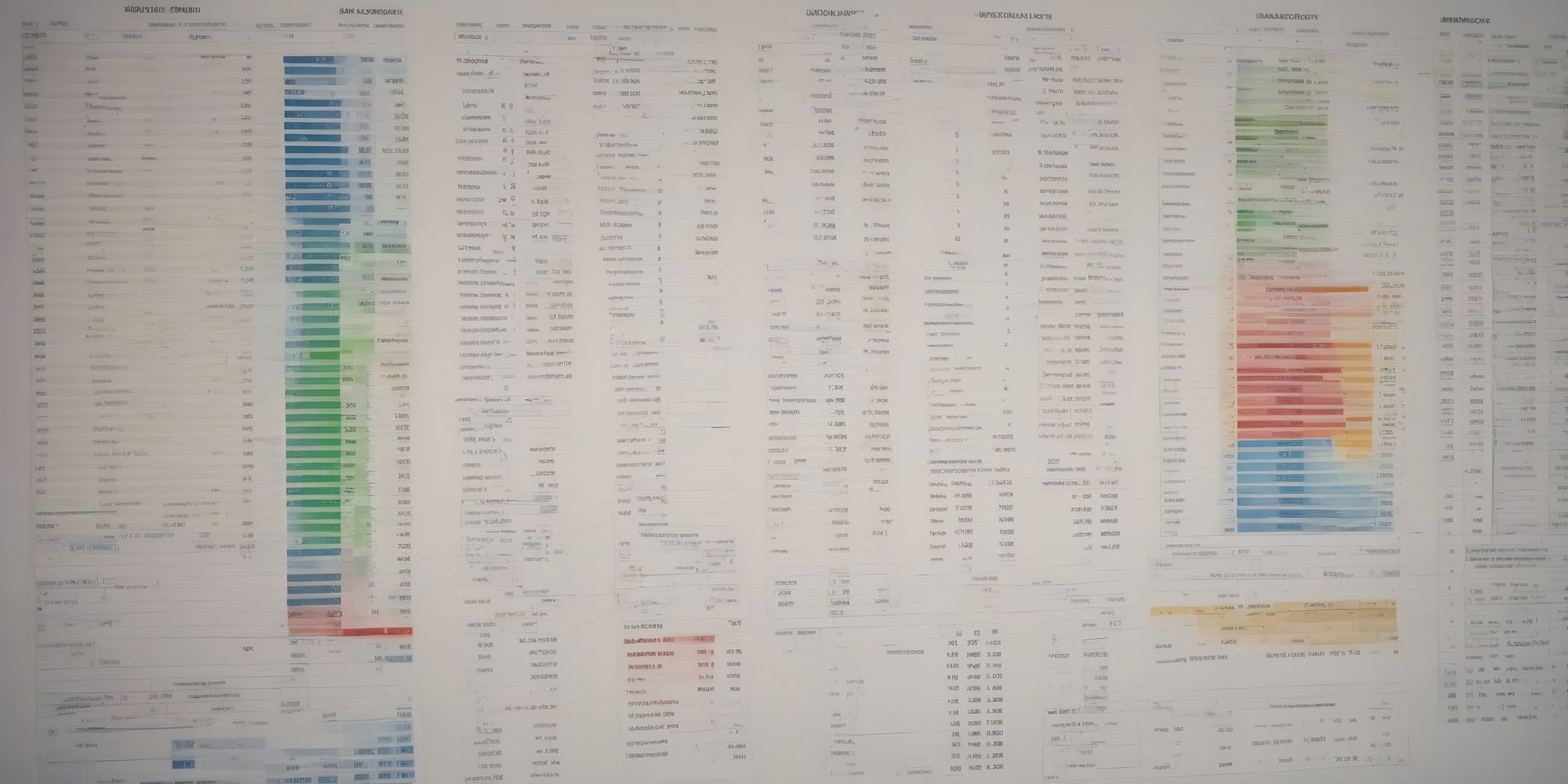Mastering Bonds Spread: Analyzing and Capitalizing on Yield Spreads
Have you ever wondered how some investors manage to find lucrative opportunities in the financial markets? One such avenue is mastering the art of analyzing and capitalizing on yield spreads in bond markets. Bond spreads, also known as yield spreads, play a crucial role in determining the potential returns and risks associated with fixed-income investments. By understanding and effectively navigating these spreads, investors can unearth hidden gems and achieve impressive profits.
In this article, we will delve into the world of bond spreads, exploring their significance, intricacies, and strategies to help you unlock the full potential of this profitable investment landscape. Whether you are a seasoned investor or a curious novice, join us on this journey to unravel the mysteries of mastering bond spreads.
Understanding the Concept of Bond Spread
The bond spread refers to the difference in yield between two bonds. It is an important measure for investors as it provides insights into the relative value and risk of different bonds. A wider spread indicates higher perceived risk, while a narrower spread suggests lower risk. Understanding bond spreads can help investors identify opportunities for potential gains or make informed decisions regarding their bond portfolio.
For example, a bond with a higher spread may offer a better return compared to a similar bond with a lower spread. By analyzing bond spreads, investors can gauge market sentiment and make more informed investment choices.
Importance of Analyzing Bond Spreads
Analyzing bond spreads is integral to making informed investment decisions. By examining the yield spread between different types of bonds, investors can assess the relative attractiveness of one bond over another and identify potential opportunities for profit. Bond spreads can offer insights into market sentiment, credit risk, and economic conditions.
For example, a widening spread may indicate increasing risk aversion or deteriorating credit quality, while a narrowing spread may suggest improving economic conditions or increased investor confidence. By staying vigilant and monitoring bond spreads, investors can capitalize on potential mispricings and adjust their portfolios accordingly to maximize returns.
Factors Affecting Bond Spreads
Credit Quality and Default Risk
Credit quality and default risk are significant factors impacting bond spreads. When analyzing bond spreads, it is important to consider the creditworthiness of the issuer and the likelihood of default. Bonds issued by entities with higher credit ratings usually have lower spreads compared to those with lower ratings. Investors demand higher yields to compensate for the increased risk of default.
For example, a bond issued by a financially stable corporation may have a smaller spread compared to a bond issued by a company with a history of financial instability. Understanding the credit quality and default risk associated with bonds helps investors make informed decisions and adjust their strategies accordingly.
Interest Rate Changes
When it comes to analyzing bond spreads, one crucial factor to consider is the impact of interest rate changes. Fluctuations in interest rates can significantly impact bond prices, subsequently affecting their spreads. Generally, when interest rates rise, bond prices tend to fall, leading to wider spreads. Conversely, when interest rates decline, bond prices typically rise, resulting in narrower spreads.
For example, if the central bank decides to raise interest rates due to inflation concerns, bond spreads may widen as investors demand higher yields to compensate for the increased risk. Therefore, it is important for investors to monitor interest rate movements closely in order to make informed decisions when capitalizing on bond spreads.
Market Liquidity
Market liquidity is an important factor to consider when analyzing bond spreads. It refers to the ease with which bonds can be bought or sold without significantly impacting their prices. Bonds with higher liquidity tend to have narrower spreads, as they are more actively traded and have a larger pool of buyers and sellers. On the other hand, less liquid bonds may have wider spreads, as there is limited demand or supply.
Traders and investors should be cautious when dealing with illiquid bonds,as they may face challenges in executing trades or experience larger spreads. It is advisable to focus on bonds with sufficient liquidity to ensure efficient trading and minimize the impact on spreads.
Analyzing Bond Spreads
Yield Spread Calculation
Yield spread calculation is a fundamental tool when analyzing bond spreads. It compares the yield of a bond to a benchmark, usually a government bond with similar maturity. The formula involves subtracting the benchmark yield from the bond yield, providing a measure of the additional compensation investors demand for taking on the bond's risk. A positive yield spread suggests higher risk compared to the benchmark, while a negative spread indicates lower risk.
This information helps investors assess the relative value of bonds and make informed investment decisions.
For example, if a corporate bond has a higher yield spread than a comparable government bond, it may indicate higher credit risk associated with the corporate issuer.
Comparing Bond Spreads
Comparing bond spreads is a valuable method for investors to assess the relative value of different bonds. By analyzing the yield spreads between bonds with similar characteristics, investors can identify opportunities for potential gains.
For example, if a corporate bond offers a higher yield spread compared to a government bond with similar credit quality, it may indicate a higher risk but also a potentially higher return. This comparison allows investors to make informed decisions based on their risk appetite and investment goals.
Additionally, investors can compare bond spreads within the same issuer to evaluate the market perception of different bond offerings.
Interpreting Bond Spreads
Interpreting bond spreads is a fundamental aspect of bond analysis. By understanding bond spreads, investors can gauge the relative value and risk associated with different bonds. A wider bond spread typically indicates higher risk, while a narrower spread suggests lower risk. Examining the historical trend of bond spreads can provide insight into market sentiment and economic conditions.
For example, during periods of economic uncertainty, bond spreads may widen as investors demand higher compensation for taking on additional risk. Conversely, in times of economic stability, bond spreads tend to narrow. By monitoring and interpreting bond spreads, investors can make informed decisions about bond investments and potentially identify opportunities for higher returns.
Capitalizing on Bond Spreads
Investment Strategies
Investment strategies are crucial in capitalizing on bond spreads. One common approach is value investing, which involves identifying undervalued bonds with wider spreads and potential for price appreciation. This strategy focuses on purchasing bonds below their intrinsic value, aiming for long-term gains when spreads narrow. Another strategy is arbitrage, where investors exploit temporary pricing discrepancies between similar bonds to generate profits.
For instance, if a corporate bond with higher credit rating offers a narrower spread compared to a similar bond with lower credit rating, investors might consider buying the undervalued bond to capture the potential price convergence. By implementing these strategies, investors can make informed decisions and take advantage of bond spread opportunities.
Value Investing
Value Investing in the Context of Bond Spreads:
Value investing is a strategy that involves identifying undervalued assets and purchasing them to benefit from their potential price appreciation. When it comes to bonds, value investing focuses on finding bonds with attractive yield spreads compared to similar bonds in the market. Investors look for bonds that offer higher yields relative to their credit risk and market conditions. By analyzing bond spreads, identifying mispriced bonds, and assessing the underlying credit quality, value investors can capitalize on potential opportunities.
For example, if a bond's spread widens due to temporary market concerns, value investors may see it as an opportunity to purchase the bond at a discounted price and earn higher returns when the spread narrows.
Arbitrage Opportunities
Arbitrage opportunities can arise when analyzing bond spreads. Investors can take advantage of price disparities between different bonds to generate profits. By identifying bonds with similar risk profiles but different spreads, investors can buy the undervalued bond with a lower spread and sell the overvalued one with a higher spread. This strategy aims to capture the price convergence that occurs as market participants correct for the mispricing.
For example, if two similar corporate bonds have different spreads due to perception differences, an investor may buy the bond with the wider spread and wait for the spreads to narrow, resulting in a profitable trade.
Real-World Examples
Understanding how bond spreads work is crucial for investors. In real-world scenarios, government bonds tend to have narrower spreads compared to corporate bonds due to their lower default risk.
For example, during economic downturns, spreads on corporate bonds tend to widen as investors perceive higher default risk. By analyzing and capitalizing on these spread differentials, investors can strategically allocate their portfolios to potentially earn higher yields.
Additionally, monitoring historical spreads can provide insights into market sentiment and identify potential arbitrage opportunities. Successful investors adjust their investment strategies based on these real-world examples to achieve better risk-adjusted returns.
Over to you
This article focuses on the topic of bond spread analysis and how investors can effectively capitalize on yield spreads. It highlights the importance of understanding yield spreads and their impact on bond prices. The article emphasizes the significance of identifying the key factors that influence yield spreads, such as credit risk, liquidity, and market conditions.
Additionally, it provides insights on different bond spread strategies, including duration spread, sector spread, and quality spread. The article concludes by emphasizing the need for thorough research and analysis in order to master bond spread dynamics and make informed investment decisions.


